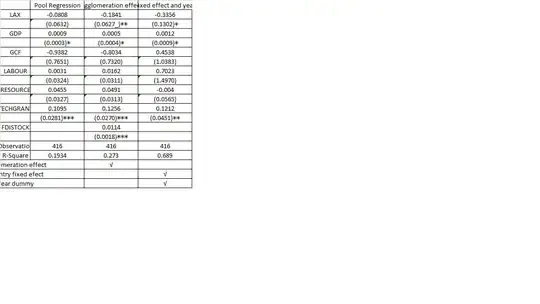This answer is adapted from a similar answer I wrote here.
In a Poisson process we have events occurring at some specified rate $\lambda > 0$ and we can analyse the process by looking either at the time between events, or the number of events in a given time. To do the former, let $\tau_1, \tau_2, \tau_3, ... \sim \text{IID Exp} (\lambda)$ be the time between events in the process, and define the partial sums $T_n \equiv \sum_{i=1}^n \tau_i$, which represent the time taken for the first $n$ events. Then we have $T_n \sim \text{Ga} (n, \lambda)$ so that:
$$\begin{equation} \begin{aligned}
\mathbb{P}(T_n \leqslant t) = 1 - \mathbb{P}(T_n >t) &= 1 - \int\limits_t^{\infty} \text{Ga} (s|n, \lambda) ds \\
&= 1-\frac{\lambda^n}{\Gamma (n) } \int\limits_t^{\infty} s^{n-1} \exp (- \lambda s) ds \\
&= 1-\frac{1}{\Gamma (n)} \int\limits_t^{\infty} (\lambda s) ^{n-1} \exp (- \lambda s) \lambda ds \\
&= 1-\frac{1}{\Gamma (n)} \int\limits_{\lambda t}^{\infty} r^{n-1} \exp \left( - r \right) dr \\
&= 1-\frac{\Gamma(n, \lambda t)}{\Gamma (n)}. \\
\end{aligned} \end{equation}$$
Using integration by parts, the upper incomplete gamma function follows the recurrence:
$$\begin{matrix}
\Gamma (n, x) = (n-1) \Gamma(n-1, x) + x^{n-1} \exp (-x) & & \Gamma (1, x) = \exp(-x).
\end{matrix}$$
For integer $n$, repeated application of this recurrence yields:
$$\Gamma (n, x) = \Gamma (n) \exp (-x) \sum_{k=0}^{n-1} \frac{x^k}{k!}.$$
So, letting $N(t) \sim \text{Pois} (\lambda t)$ we have:
$$\begin{equation} \begin{aligned}
\mathbb{P}(T_n \leqslant t) &= 1- \exp (-\lambda t) \sum_{k=0}^{n-1} \frac{(\lambda t)^k}{k!} \\
&= 1 - \sum_{k=0}^{n-1} \text{Pois} (k|\lambda t) \\
&= \sum_{k=n}^{\infty} \text{Pois} (k|\lambda t) \\
&= \mathbb{P} (N(t) \geqslant n).
\end{aligned} \end{equation}$$
This gives us a basic intuitive result for the Poisson process. If the time taken for the first $n$ events is no greater than $t$ then the number of events that have occurred at time $t$ is at least $n$. If the time between events follows an exponential distribution then the number of events at a given time follows a Poisson distribution.
